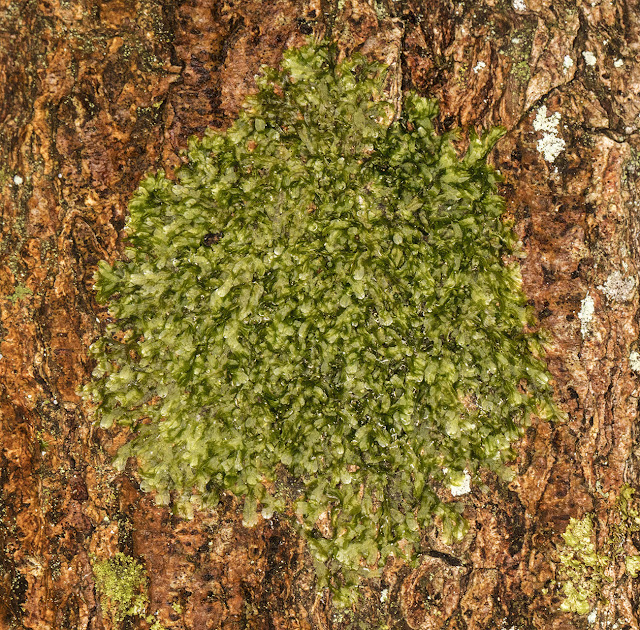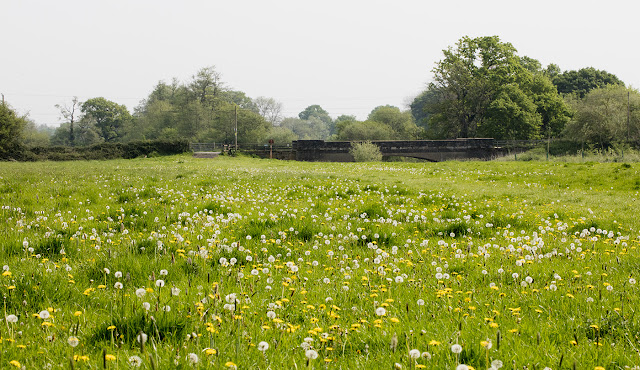 |
| Oak with Flavoparmelia caperata. Hayes Common, 30 December 2016. |
Things grow on trees, and I don't mean just fungi, which grow on trees because they are eating the trees. I mean things that just use the trees as a place to rest, where they can get some light, and stand less chance of being grazed or trodden on.
In the UK, it's mostly lichens, mosses and liverworts. Other countries with different biota and climates can have a much more extensive range of plants that behave like this. The tree in the top photo has some moss and some large patches of a distinctive bluish-green lichen, Flavoparmelia caperata. As you can see, you don't need to go far from a road to find something like this.
Usually, they are high up in the trees, but it is possible to find spots like this where they are arrayed near the ground where you can get a good look.
 |
| Oak branch with a range of mosses and lichens. Hayes Common, 30 December 2016. |
As here; some of it is high up, but there's also that long, long low branch covered with greenery.
 |
| Evernia prunastri, Oakmoss. On an oak branch on Hayes Common, 2 January 2017. |
In oak woods, there is a great deal of this shrubby Oakmoss, actually a lichen despite its common name. You can see lots of clumps that have fallen to the ground, perhaps disturbed by squirrels. It grows on the small branches and twigs. There are also many other species that are easy to find.
On the trunks you find more of the leafy lichens like the one in the top photo. Also, things like this:
 |
| Metzgeria furcata, Forked Veilwort, on oak. Hayes Common, 30 December 2016. |
This is on an oak trunk. You might think it looks mossy, but close up:
 |
| Metzgeria furcata, Forked Veilwort, on oak. Hayes Common, 30 December 2016. |
Those delicate flat forked straps are not moss leaves at all, but the thallus of a common liverwort, Metzgeria furcata.
You don't need to go into the woods to see this sort of thing. Here's a local street tree.
 |
| Tree on Bourne Vale, Hayes, 13 January 2017. |
The marker shows where I spotted a tiny clump of moss.
 |
| Syntrichia laevipila, Small Hairy Screw-moss, on the bark of a tree trunk on Bourne Vale, Hayes, 13 January 2017. |
I have rotated the photo to put the moss in a more familiar orientation, but you can see it's growing on rough bark. There are also several lichens nearby. There are not many records of Syntrichia laevipila in this area, so this was a good find.
From a distance, this tree might look quite bare without its leaves, but if you look at the higher branches from a bit closer:
 |
| Lichens on a tree on Bourne Vale, Hayes, 13 January 2017. |
You can see that it is absolutely covered with, not only lichens, but there will also be mosses, liverworts and algae. And that's on a busy suburban street.
I haven't mentioned algae before, but only because they are so small that I can't produce decent photos of them. They are there alright.























